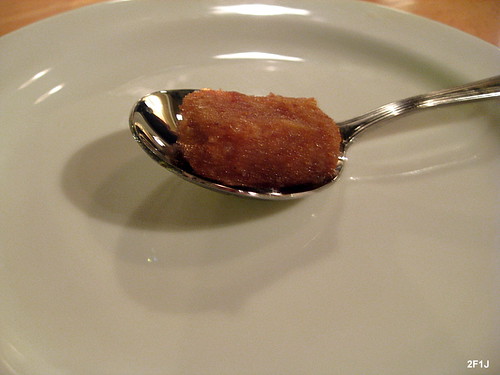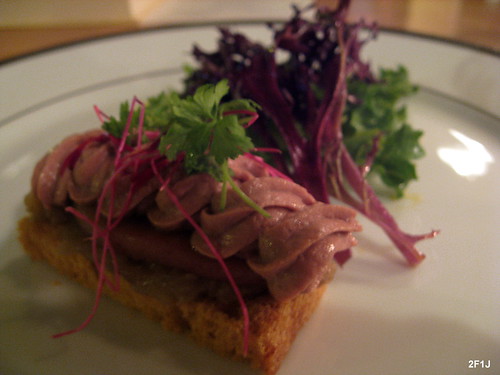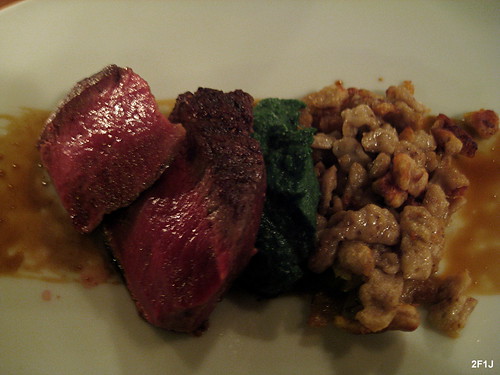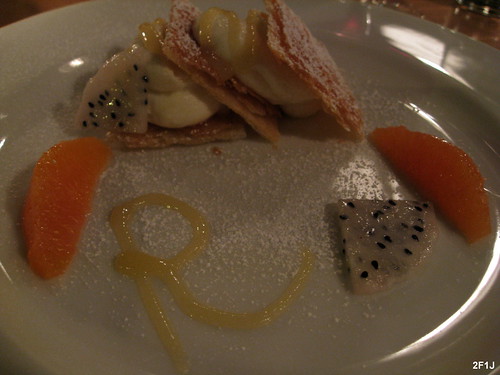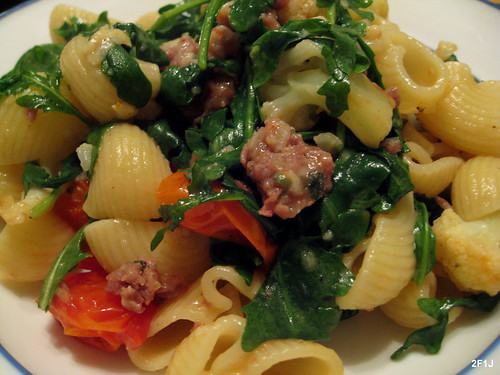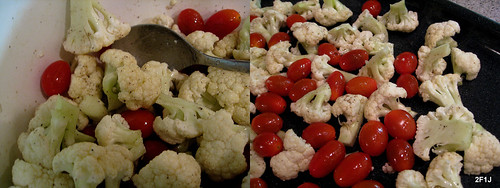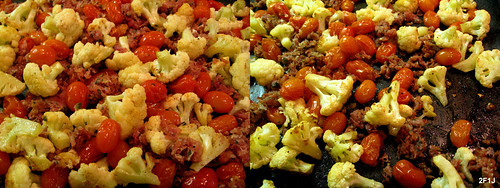Most trends in the restaurant industry are focused on variations of the food by using new techniques, different ethnic influences or ingredients characterized by buzzwords as molecular gastronomy or farm-to-table. The restaurant as a business entity and the base for a restaurateur to conduct business always remained the same over the years. The chef and cuisine could change but the location and the name normally stayed the same and was the characteristics of this business. Only in recent years did some restaurateurs start to think about the concept of the restaurant as a business entity as itself and how it could be transformed. As a consequence two new restaurants styles recently emerged – food trucks and pop-up restaurants. Food trucks could be described as a new twist on fast food places whereas pop-up restaurants try to establish themselves as the trendy version of more upscale restaurants.
Pop-up restaurants are an interesting concept as they could be described as temporary restaurants within a restaurant - restaurants which only serve breakfast or lunch rent out their space for a limited time to other restaurateurs for dinner service. This deal appears to have many advantages for everybody: the pop-up restaurateur doesn’t need a long term lease and has much less overhead costs. The temporary character of the pop-up restaurant often creates a lot of interest without much advertisement and ensures a well booked restaurant. The renter gets money for renting out the unused restaurant for dinner. The customer often has the chance to experience some very creative and unusual cuisine at pop-up restaurants.
It is hard to track down or agree when the first pop-up restaurant started but some people think that the Chinese restaurant Lung Shan in San Francisco was the starting place of the pop-up restaurant boom several years ago as it transformed twice a week to host the Mission Street Food as a venue for chefs to cook without many limitations. Over the last few years more and more chefs started their own pop-up restaurants and today there is hardly any bigger city which doesn’t have its own versions and it was just a matter of time until even San Diego would have a first pop-up restaurant.
Perhaps the most well-known pop-up restaurant currently is LudoBites from Chef Ludo Lefebvre in Los Angeles. Sous Chef for LudoBites incarnation 4.0, 5.0 and 6.0 was Chef Dan Moody. Chef Moody has San Diego connections as he graduated from Torrey Pines High School before enrolling at CIA at Hyde Park. Already during his time at CIA he worked for Ludo at L’Orangerie. After some years in the restaurant industry he decided to change fields and started working in the financial sector after earning a degree in economics. But after a few years he realized that his true interest was really in the restaurant business, got back in touch with Ludo and worked first as line cook and then as sous chef at LudoBites. Seeing the success of the pop-up restaurant concept he decided to move it to San Diego. He choose St. Germain’s Café in Encinitas as the location for Relate - San Diego’s first pop-up restaurant.
St. Germain’s Café is located on the Pacific Coast Highway close to the city center of Encinitas. The signs of the café are hard to miss whereas only a few small signs show that during the night this is the home of the Relate Restaurant
About 1/3 of the seats are located outside on the patio where some heating lamps help to make the area comfortable.
The inside of the restaurant reminds that it is during the day a café with its rustic table and chairs. Overall the ambience was lively and at the same time relaxed. It’s a nice feature to be able to see Chef Moody throughout the night work between the kitchen and the front of the house coordinating everything. He also took the time to visit every table at least once during the service. Relate has every night a five course tasting menu with the possibility to add one or two extra dishes.
Amuse Bouche: “French Onion Soup”
A regular French onion soup has bread surrounded by the liquid. This amuse bouche was a clever play on an inverse soup where the bread is surrounding the liquid. Once you bite on the pillow the warm onion soup is oozing out. A very promising start of the tasting menu.
1st Course: Foie gras & chicken liver mousse, sautéed apples, onion jam, baby lettuce, golden beet vinaigrette.
Even though foie gras and chicken liver mousse both start from livers they have quite distinct different flavors. Mixing them together in one mousse blurred the unique character of both. It might have been better to have both mousses on one plate but separated. One of them could have a sweet pairing with the sautéed apple whereas the second mousse would have worked nicely with a more savory onion jam.
Supplement: Crispy escargots on toast with garlic crème anglaise.
We decided to order one extra course with the crispy escargots. The escargots were indeed crispy without being rubbery which is often a problem with escargots. The garlic crème anglaise was a good idea for the classic pairing of escargots and garlic but would have needed a stronger garlic taste. The toast was very crispy which reminded us of zwieback and overshadowed the crispiness of the escargots. A softer toast could have also been soaked up with some garlic preparation to intensify the garlic flavor.
2nd Course: Seared local redrock, white bean puree, wilted kale, garam masala buerre blanc.
Nicely seared fish with a crispy outside and moist flesh was accompanied with some earthy bean puree and slightly bitter kale. What really brought the dish together was the garam masala of buerre blanc. It added an interesting and unexpected flavor to the dish without overpowering any of the other components and made the dish come alive.
3rd Course: Sauteed scallop, miso lentils, baby bok choy.
Lentils are a versatile ingredient as they add texture to a dish and also some background flavor without dominating everything. Therefore they are often paired with milder tasting proteins like fish or in this case with perfectly sautéed lightly sweet scallops. At the same time lentils can be combined with many different spices to steer a dish in a certain direction, e.g. adding some curry gives the dish an Indian touch, cumin can be reminiscent of North African influences and adding miso shows some Japanese/Asian direction. The baby bok choi helped to accentuate this influence but unfortunately the miso flavor wasn’t noticeable in this dish and left us with good ingredients but compared to the previous dish where the garam masala elevated the dish this time it felt flat.
4th Course: Spiced beef, spinach avocado puree, crispy porcini spaetzle, green flash double stout gastrique.
This was perhaps the most balanced dish of the night. Very tender beef cooked to rare/medium rare had a spice coating which gave the beef an interesting spicy kick. The creamy spinach avocado puree had a bitter undertone which together with the green flash double stout gastrique complemented the spicy beef. The crispy spaetzle with a discernible porcini flavor was a fitting side.
5th Course: Mascarpone mousse napoleon, lemon, dragon fruit, orange.
Good variation on mille-feuille with light puff pastry and mascarpone cream which together with the lemon jam made a flavorful “filling”. The orange slices added some fruitiness to the desserts whereas the dragon fruit were nice to look at but didn’t add much to the dish.
We went to San Diego’s first pop-up restaurant without really knowing what to expect. Pop-up restaurants have the reputation to often try to push the limits of the culinary expectations. At the same time San Diego isn’t really known to be a successful place for overly creative restaurants. So the question for us was what Chef Moody and his team at Relate would think about this situation and how they would position the restaurant. After experiencing the first tasting menu at Relate we had the feeling that we weren’t the only ones to have this question. It appeared that Chef Moody asked himself the same question without really having a clear answer and used, understandably, the first round of Relate restaurant to test the situation in San Diego. As a consequence Relate’s first incarnation was a solid presentation without any major missteps but also without any really memorable dishes. The execution of the dishes was overall solid but also felt often as if Chef Moody’s creativity was muted and he downplayed any sparkles of culinary excitements in favor of playing it safe. The amuse bouche and the beef course showed where a future direction of Relate might lead to but too often we had the feeling that Chef Moody wasn’t willing yet to do the last 2-3 steps within a dish to make it special. Even though San Diego isn’t known as the stronghold of culinary creativity there are still quite a number of excellent restaurants as Blanca, Kitchen 1540, George’s, Cavaillon, and Café Chloe, and it is obvious Chef Moody with his ambitious cooking style is targeting a similar customer base as these restaurant but it will be necessary for Relate to step up the game in the future to be really able to compete with these restaurants. Overall it would be too early and unfair to judge Relate’s quality after the first round which more or less is just a get to know between San Diego and the restaurant. It will be interesting to see which direction Chef Moody is planning to go – focusing on pop-up restaurants as a novel concept for San Diego and relying on this type of restaurants as an event for the success or just seeing pop-up restaurants as vehicle to present excellent cuisine. But we are glad that Chef Moody was willing to take the risk and expose San Diego to the concept of pop-up restaurants and we are looking forward to follow and participate in future iterations.
1010 S Coast Highway 101 # 103
Encinitas, CA 92024-5067(760) 753-5411



